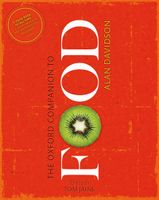Advertisement
Terrine
Published 2014
The recipient itself is often but not invariably rectangular; it is straight sided and fairly deep. What is cooked in it has evolved in the course of time to its current form, a sort of ‘loaf’, suitable for being sliced, of minced meat, poultry, seafood, or vegetables (or even fruits). The terrine is often layered so that when slices are cut from it they present an attractive and multi-coloured appearance. Terrines of the 17th century, though indeed made in a dish as described, were more likely elaborate stews with vegetables and gravy. See also olio and pupton for other dishes that exemplify this style of cookery.


